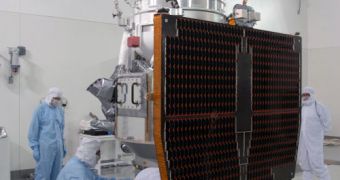Using the NASA Wide-field Infrared Survey Explorer (WISE), investigators were recently able to conduct a series of studies on our solar system. The survey they conducted revealed the existence of 20 new comets, 134 near-Earth objects (NEO) and some 33,000 asteroids.
With all the new discoveries, our solar system just became a wee bit more crowded, though not by so much. These findings were the secondary objective of the WISE mission, which finished its primary mission a few months ago.
While the telescope itself is still in perfect shape, its supplies of liquid coolant have been exhausted, which means that its detectors can no longer operate with tremendous levels of precision.
But its current capabilities are still very well suited for conducted surveys in our own solar system, which is why the NEOWISE survey was approved. Finding all these space bodies, and putting them in a catalog, is an important step to figuring out our planetary neighborhood.
For the entire second half of its mission, which began in October 2010, the telescope has been using only two cameras, as the other two were rendered useless when the liquid coolant ran out.
It is with results such as these that experts are starting to figure out precisely how little they know about the solar system and the objects it contains. NEO have been a subject of growing concern over the past few years, and the new discoveries are bound to ease some spirits.
“Even just one year of observations from the NEOWISE project has significantly increased our catalog of data on NEOs and the other small bodies of the solar systems,” explains expert Lindley Johnson, who holds an appointment as the NASA program executive for the NEO Observation Program.
As per official classifications, NEO are objects including some asteroids and comets, whose orbits bring them within 28 million miles (45 million kilometers) of Earth's orbit around the Sun.
Some of these objects could pose a collision threat to our planet. The asteroid Apophis – which has been making headlines lately – is a good example of this. But most NEO don't come even close to reaching Apophis “tiny odds” of success, Space reports.
NASA announces in a statement that the WISE telescope will now enter hibernation mode, flying in a polar orbit around Earth. Officials do not exclude the possibility that the observatory will be activated again in the future, for additional studies.
“WISE has unearthed a mother lode of amazing sources, and we're having a great time figuring out their nature,” says WISE principal investigator and University of California in Los Angles (UCLA) professor Edward Wright.

 14 DAY TRIAL //
14 DAY TRIAL //